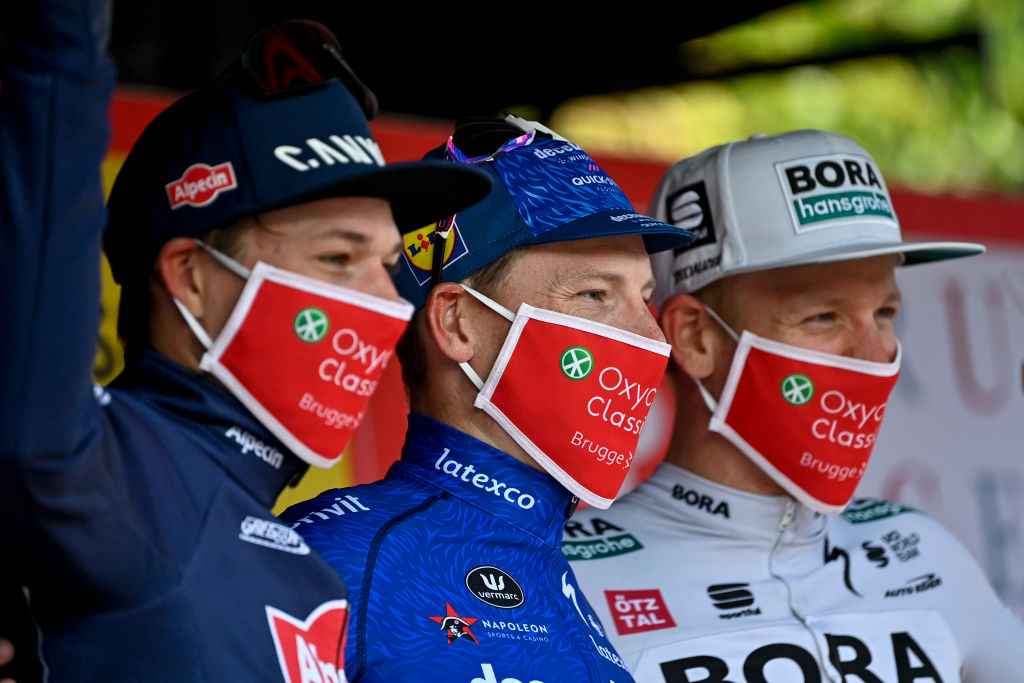Giro d'Italia teams face final COVID-19 testing in Turin on Wednesday
RCS Sport to provide in-race testing as third wave subsides and Italy opens up

The 184 riders taking part in the Giro d’Italia and their 460 team staff will arrive in Turin on Wednesday afternoon, completing a final COVID-19 PCR test so that they can enter the protective race bubble and their respective team bubbles.
As part of the UCI COVID-19 medical protocol, all riders and staff must test negative in PCR tests six days and then again three days before the race.
Most teams carry out extra precautionary testing but the final PCR test will decide if riders can start the Giro d’Italia. Anyone testing positive and confirmed positive by follow-up testing will be placed in isolation, as will anyone who has come into close contact with them.
According to La Gazzetta dello Sport, race organiser RCS Sport will organise and manage the final testing on Wednesday, with results known by Thursday lunchtime, before the evening team presentation. If a positive case emerges, teams can substitute a rider or member of staff as long as they have completed the six and three day testing protocol.
Riders and team staff face further testing during the three-week Grand Tour, with rapid tests done at the weekends before obligatory PCR tests on the rest day on Tuesday, May 18 and again on the second rest day on Tuesday, May 25.
RCS Sport race staff and UCI officials are also to be tested regularly. Everyone else on the race, including the media, will remain outside the race and team bubbles, with access restricted and carefully managed.
Every race organiser has to appoint a special COVID-19 doctor who coordinates the testing and protection of the race. Local medical authorities have the final word on COVID-19 cases and the consequences for the race.
Get The Leadout Newsletter
The latest race content, interviews, features, reviews and expert buying guides, direct to your inbox!
The 2021 UCI medical protocol confirms that all riders and staff, even individuals already vaccinated such as UAE Team Emirates, will have to undergo PCR testing and respect rules of social distancing and the use of protective masks.
Celebratory hugs are discouraged, feed zone positions are not made public, riders have to pull on their own classification jerseys before climbing on the podium. The start, finish and team bus areas are all considered part of the race bubble area.
Last year’s Giro d’Italia was hit by several COVID-19 cases. Simon Yates and then four staff members at Mitchelton-Scott team tested positive on the first rest and the team left the race. Steven Kruijswijk (Jumbo-Visma) and Michael Matthews (Team Sunweb) also tested positive and Jumbo-Visma also pulled out of the race.
17 police officers marshalling the 2020 Giro E-Bike event – which takes place on the same roads a couple of hours before the main event – tested positive for COVID-19 and the Giro E-Bike was stopped.
Several riders complained about sharing hotel dining rooms with the general public, while most teams opted to have their own team cooks and dining rooms. EF Pro Cycling wrote to the UCI and RCS Sport calling for the Giro to be stopped on the second rest day due to what they described as “a clearly compromised bubble”, but the request was rejected by the UCI and RCS Sport.
Last year, a second wave of the COVID-19 pandemic was building in Italy as the Giro d’Italia progressed. This year case numbers are falling after a lower April peak.
On Tuesday, 9,116 new cases were discovered with 413,000 currently positive in the country. 18,146 are currently in hospital, with 2,423 in intensive care. 121,000 people have died in Italy during the pandemic, with 305 further deaths on Tuesday.
The Italian government has recently placed much of the country in the lower ‘yellow’ category, with restaurants and shops open but outdoor dining allowed until the 10pm curfew.
Crowds will be allowed along the race route but face masks and distancing are obligatory outdoors in Italy.

Stephen is one of the most experienced member of the Cyclingnews team, having reported on professional cycling since 1994. He has been Head of News at Cyclingnews since 2022, before which he held the position of European editor since 2012 and previously worked for Reuters, Shift Active Media, and CyclingWeekly, among other publications.